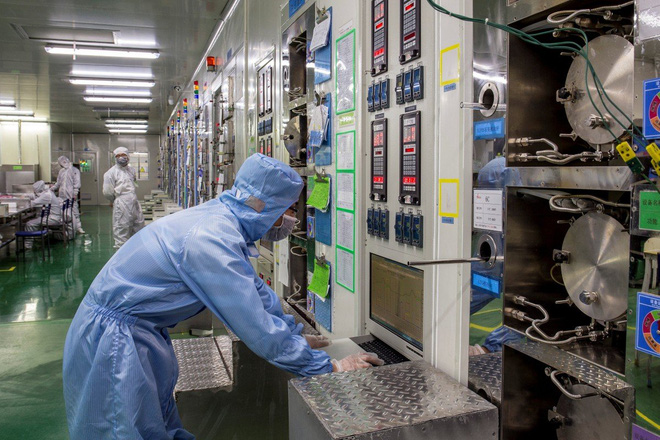How is China’s strategy to push the domestic chip industry at all costs showing signs of ‘counterproduction’?
- Tram Ho
The Chinese government announced last week a long list of incentives aimed at encouraging domestic semiconductor development and production, including tax exemptions for up to 10 years for some manufacturers.
This urgent strategy is set in a very clear context. It is that China is trying to switch to a “self-sufficient” regime of semiconductor materials, in order to prepare for a long-term economic, technological and geopolitical competition with the United States.
However, like many other intentional industrial policies in Beijing, support for the semiconductor industry can also lead to wasteful spending and excess capacity. Because the message it produces also means that the policy will favor and encourage any investment in the chip industry. In addition to tax exemptions, it also promises financial support from the government, as well as initial public offerings, or easy access to bank credit.

China currently has more than 45,000 registered businesses involved in chip design, testing, development and manufacturing. Photo: Reuters
According to SCMP political economist Zhou Xin, the plan to support the semiconductor industry is similar and in some respects it is identical to the policies that China adopted a decade ago. to develop “7 strategic emerging industries”, including electric vehicles.
As a result, China has more than 600 electric vehicle manufacturers, many of which are stuck in the state of “undead”, wanting to live, wanting to die without being done. And ironically, Tesla, an American manufacturer with a wholly owned factory in Shanghai, has miraculously become the dominant player in the Chinese car market.
And if one looks closely at the plans for China’s chip industry, one can easily see that the Beijing government is not even set high. A chip factory using 28-nanometer technology qualifies for the highest award from the government, even though the technology is at least two generations slower than modern 7-nanometer chip technology, which is only can be produced by overseas factories.
Of course, not every smart device in China needs to be assembled with the latest and most advanced chips, and mass production at home could help China completely replace all-grade chips. middle or low end are having to import.
“The key is the balance between risk and return”, Mr. Zhou Xin analyzed.

The policies driving China’s semiconductor industry are showing signs of waste and redundancy.
And the signs of over-limits have become more and more evident, as nearly 30 Chinese cities announced semiconductor projects in the first half of 2020 alone.
China currently has more than 45,000 registered businesses related to chip design, testing, development and manufacturing. Newly registered chip businesses in the chip industry grew 200% in the second quarter of 2020 alone from a year earlier, according to business registration search service Qichacha.
And, a number of semiconductor startups have collapsed. Most recently, Nanjing-based Tacoma Semiconductor Technology filed for bankruptcy.
The irony is that China will continue to depend on imports of 7-nanometer chips and more advanced chip generations for years to come. And the implementation of these new policies may contribute to the lengthening of this process.
“After all, if the 28-nanometer production line is good enough to ensure getting the full support of the Beijing government and finding enough customers, why should companies spend more money and time? to pursue new technological breakthroughs? “ Mr. Zhou Xin asked.
Refer to SCMP
Source : Genk
